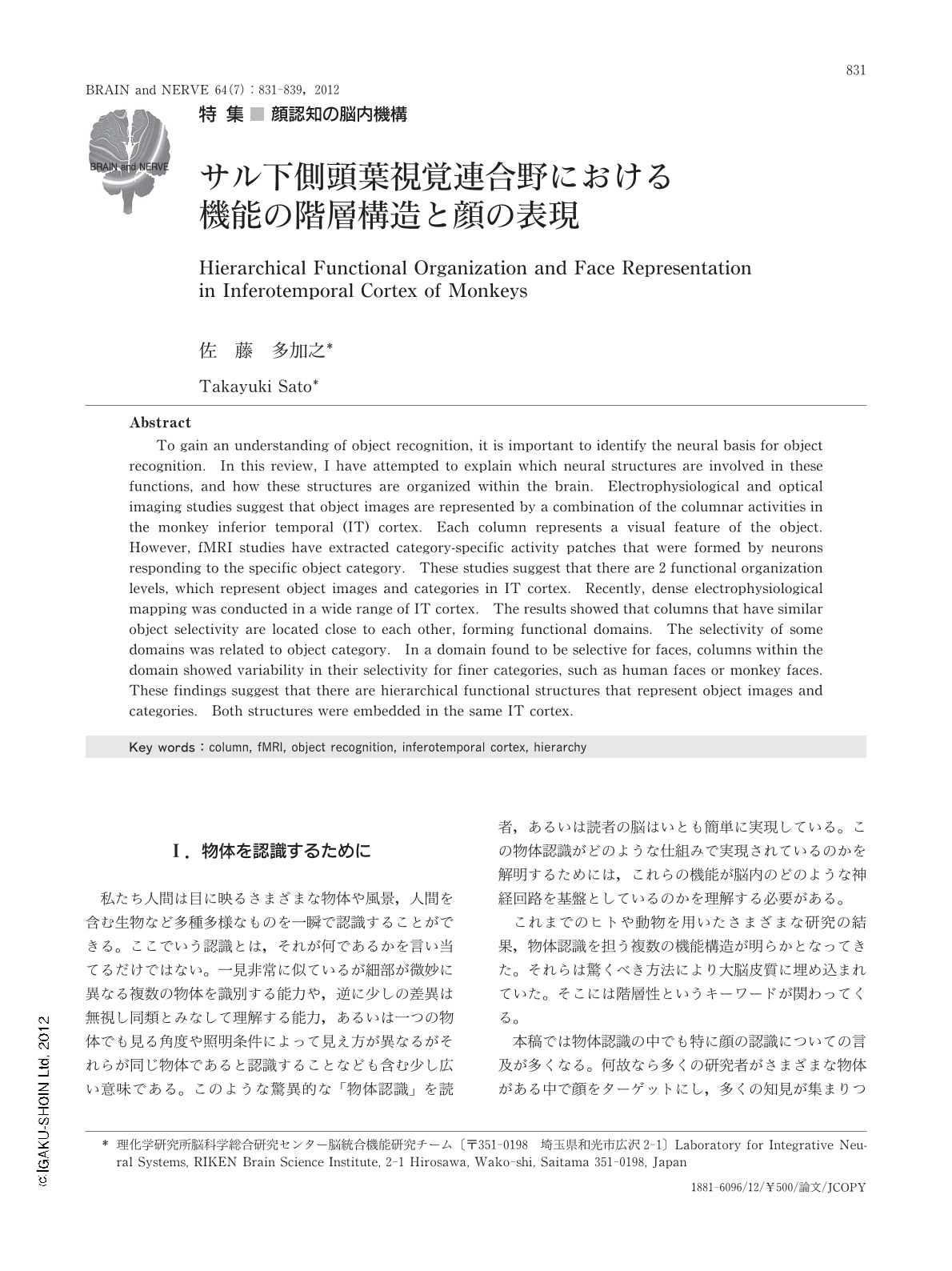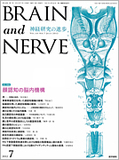Japanese
English
- 有料閲覧
- Abstract 文献概要
- 1ページ目 Look Inside
- 参考文献 Reference
Ⅰ.物体を認識するために
私たち人間は目に映るさまざまな物体や風景,人間を含む生物など多種多様なものを一瞬で認識することができる。ここでいう認識とは,それが何であるかを言い当てるだけではない。一見非常に似ているが細部が微妙に異なる複数の物体を識別する能力や,逆に少しの差異は無視し同類とみなして理解する能力,あるいは一つの物体でも見る角度や照明条件によって見え方が異なるがそれらが同じ物体であると認識することなども含む少し広い意味である。このような驚異的な「物体認識」を読者,あるいは読者の脳はいとも簡単に実現している。この物体認識がどのような仕組みで実現されているのかを解明するためには,これらの機能が脳内のどのような神経回路を基盤としているのかを理解する必要がある。
これまでのヒトや動物を用いたさまざまな研究の結果,物体認識を担う複数の機能構造が明らかとなってきた。それらは驚くべき方法により大脳皮質に埋め込まれていた。そこには階層性というキーワードが関わってくる。
Abstract
To gain an understanding of object recognition,it is important to identify the neural basis for object recognition. In this review,I have attempted to explain which neural structures are involved in these functions,and how these structures are organized within the brain. Electrophysiological and optical imaging studies suggest that object images are represented by a combination of the columnar activities in the monkey inferior temporal (IT) cortex. Each column represents a visual feature of the object. However,fMRI studies have extracted category-specific activity patches that were formed by neurons responding to the specific object category. These studies suggest that there are 2 functional organization levels,which represent object images and categories in IT cortex. Recently,dense electrophysiological mapping was conducted in a wide range of IT cortex. The results showed that columns that have similar object selectivity are located close to each other,forming functional domains. The selectivity of some domains was related to object category. In a domain found to be selective for faces,columns within the domain showed variability in their selectivity for finer categories,such as human faces or monkey faces. These findings suggest that there are hierarchical functional structures that represent object images and categories. Both structures were embedded in the same IT cortex.

Copyright © 2012, Igaku-Shoin Ltd. All rights reserved.


